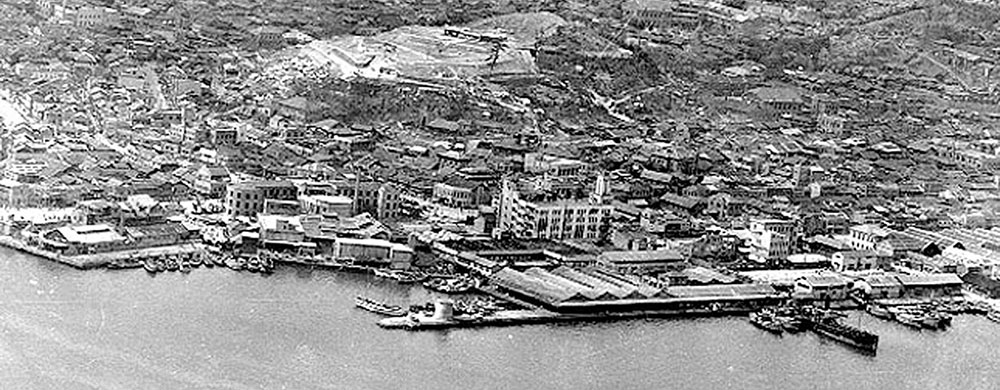DOWNLOAD
Psywar did not fill a void in radio broadcasting in Korea during the war. The American military occupation commands had taken control of all media in Japan and Korea. The Armed Forces Radio Service (AFRS) followed U.S. forces assigned occupation duty. AFRS employed mobile radio vans and commandeered Japanese stations on the mainland, Korea, the Marianas, and the Ryukyus. When Far East Command (FECOM) G-2 Psywar broadcast to Korea from Japan after the war broke out, it was done on the Far East Network (FEN) headquartered in the Radio Tokyo building.1
The 4th Mobile Radio Broadcasting Company (MRBC), 1st Radio Broadcasting and Leaflet Group (RB&L) team was sent to Pusan in August 1951 to take charge of the Korean Broadcasting System (KBS) station in the port and to coordinate its refurbishment in order to serve as the “Voice of South Korea.” While this was a cooperative U.S.-Korea venture, the American military was clearly in charge, paying reconstruction and equipment replacement costs, and training KBS personnel.2 U.S. radio operations in Japan began after August 1945.

American radio broadcasting started shortly after General Douglas A. MacArthur and his staff landed at Atsugi on 30 August 1945 to complete the formal surrender arrangements. Two AFRS mobile vans, priority shipped from Manila by FEN, a.k.a. the “Jungle Network,” began broadcasting from Yokohama in early September. For security reasons the mobile FEN assets aligned themselves with the American Occupation units. WLKH in Kure (Honshu) and WVTO in Sasebo (Kyushu) supported the U.S. Army 24th Infantry and 2nd Marine Divisions respectively. The Marines get credit for the first American troop broadcast while the first Army radio station in Japan was WLKH.3
NHK (Nippon Hoso Kyokai) or the Japan Broadcasting System, ceased operations on 10 September 1945 after Emperor Hirohito announced the end of the war to citizens abroad from Radio Tokyo.4 Less than two weeks later, Radio Tokyo No. 2 began broadcasts from the building as FEN troop station WVTR. FEN Tokyo established administrative offices on the second floor. Eleven AFRS-FEN stations covered Japan, the Marianas, the Ryukyus, and Korea when WVTP Seoul was operationally transferred to the Korea Military Advisory Group (KMAG) on 30 June 1949, less than a year before the North Koreans invaded the South.5

After hastily deployed U.S. troops and South Korean forces established a final defensive perimeter around the port of Pusan, AFRS-FEN shipped WWII-era mobile radio vans to Korea. They became the spearhead of Armed Forces Korea Network (AFKN). AFRS Seoul was the first of nine stations established by AFKN by the end of 1954. It and three others were semi-permanent and five were 6 x 6 truck-mounted stations. Instead of using radio call letters, the mobile stations chose codenames like “Vagabond,” “Gypsy,” and “Homesteader.” Most AFKN stations broadcast 18 hours a day, seven days a week; 50 percent was locally-produced programs and the rest came pre-packaged from AFRS Pacific in Los Angeles, CA.6
Koreans who understood English preferred to listen to the lively AFRS radio programs broadcast for the U.S. military personnel. They were light, listening entertainment instead of “canned” Psywar, U.S. Information Service (USIS), and Radio Free Asia programs broadcast in Korean. Despite the proliferation of radio broadcasting in Korea, there was little coordination between the armed services, Department of State, and the quasi-private entities.7 The FECOM Public Information Officer (PIO) supervised FEN, hence the recruitment of Second Lieutenant (2LT) William F. Brown, II, 1st RB&L to serve as the Psywar liaison officer effectively linked the two elements.8
It was a little different in Korea. 4th MRBC radio detachments oversaw all programming emanating from the Korean Broadcasting System (KBS) stations.9 The end of Allied Occupation in Japan on 28 April 1952 meant the U.S. had to pay for radio air time and studio leases. That did not happen in Korea until after the Armistice in 1953.
